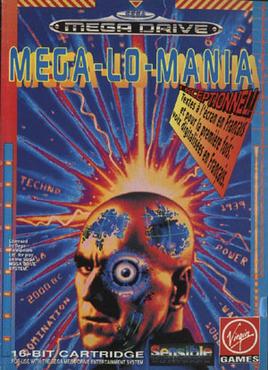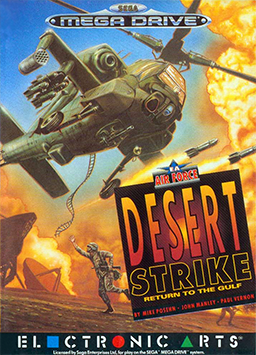
Richard Joseph was an English computer game composer, musician and sound specialist. He had a career spanning 20 years starting in the early days of gaming on the C64 and the Amiga and onto succeeding formats.

Sensible Soccer, often called Sensi, is an association football video game series which was popular in the early 1990s and which still retains a following. It was developed by Sensible Software and first released for Amiga and Atari ST computers in 1992 as well as for the IBM PC compatibles. The series was created by Jon Hare and Chris Yates, as a successor to their previous football game MicroProse Soccer (1988), which in turn was inspired by the arcade video game Tehkan World Cup (1985).

Sensible Software was a British software company founded by Jon Hare and Chris Yates that was active from March 1986 to June 1999. It released seven number-one hit games and won numerous industry awards.

Mega-Lo-Mania is a real-time strategy video game developed by Sensible Software. It was released for the Amiga in 1991 and ported to other systems. It was released as Tyrants: Fight Through Time in North America and Mega Lo Mania: Jikū Daisenryaku (メガロマニア時空大戦略) in Japan. The game was re-released on ZOOM-Platform.com via Electronic Arts on August 31, 2022.

Cannon Fodder is a series of war themed action games developed by Sensible Software, initially released as Cannon Fodder for the Commodore Amiga. Only two games in the series were created by Sensible, but were converted to most active systems at the time of release. A sequel, Cannon Fodder 2, was released in 1994 for Amiga and DOS. A third game, Cannon Fodder 3, was made by a Russian developer and released in English in 2012.

Syndicate is an isometric real-time tactical and strategic game from Bullfrog Productions created in 1993, and released for a variety of platforms beginning with the PC and Commodore Amiga. It is the first title in the Syndicate series. Set in a dystopian future in which corporations have replaced governments, Syndicate puts the player in control of a corporation vying for global dominance.

Turrican is a 1990 video game developed by Manfred Trenz. It was developed for the Commodore 64 by Rainbow Arts, and was ported to other systems later. In addition to concept design and character creation, Trenz programmed Turrican on the Commodore 64. A sequel, Turrican II: The Final Fight, followed in 1991 for the Commodore 64 and other platforms.

FIFA International Soccer is a 1993 association football video game developed by EA Canada's Extended Play Productions team and published by Electronic Arts. The game was released for the Sega Mega Drive/Genesis console in December 1993 and ported to numerous other systems in 1994. It is the first game in the FIFA series.

Xenon 2: Megablast is a 1989 shoot 'em up video game developed by The Bitmap Brothers and published by Image Works for the Amiga and Atari ST. It was later converted to the Master System, PC-98, X68000, Mega Drive, Commodore CDTV, Game Boy, Acorn Archimedes and Atari Jaguar platforms. The game is a sequel to Xenon and takes place a millennium after the previous title. The goal of the game is to destroy a series of bombs planted throughout history by the Xenites, the vengeful antagonists of the first game.

Jungle Strike is a video game developed and published by Electronic Arts in 1993 for the Sega Genesis/Mega Drive. The game was later released on several other consoles such as the Super Nintendo Entertainment System (SNES), and an upgraded version was made for DOS computers. The Amiga conversion was the responsibility of Ocean Software while the SNES and PC DOS versions were that of Gremlin Interactive, and the portable console versions were of Black Pearl Software. It is the direct sequel to Desert Strike and is the second installment in the Strike series. The game is a helicopter-based shoot 'em up, mixing action and strategy. The plot concerns two villains intent on destroying Washington, D.C. The player must use the helicopter and occasionally other vehicles to thwart their plans.

Cannon Fodder 2: Once More unto the Breach, or simply Cannon Fodder 2, is an action-strategy shoot 'em up game developed by Sensible Software and published by Virgin Interactive for the Amiga and DOS in November 1994. The game is the sequel to Cannon Fodder, a successful game released for multiple formats in 1993. The game is a combination of action and strategy involving a small number of soldiers battling through a time-travel scenario. The protagonists are heavily outnumbered and easily killed. The player must rely on strategy and heavy secondary weapons to overcome enemies, their vehicles and installations.

Desert Strike: Return to the Gulf is a shoot 'em up video game released by Electronic Arts (EA) in March 1992 for the Sega Genesis. The game was released on several other formats such as the Super Nintendo Entertainment System, including a much upgraded version for the Amiga home computer. The game was inspired by the Gulf War and depicts a conflict between an insane Middle Eastern dictator, General Kilbaba, and the United States. The player controls an Apache helicopter and attempts to destroy enemy weapons and installations, rescue hostages and capture enemy personnel, while managing supplies of fuel and ammunition.

Worms is a 2D artillery tactical video game developed by Team17 and released in 1995. It is the first game in the Worms series of video games. It is a turn based game where a player controls a team of worms against other teams of worms that are controlled by a computer or human opponent. The aim is to use various weapons to kill the worms on the other teams and have the last surviving worm(s).

Toki is a run and gun platform game released in arcades in Japan in 1989 by TAD Corporation. It was published in North America by Fabtek. Designed by Akira Sakuma, the game has tongue-in-cheek humor mixed with the action. The player controls an enchanted ape who must battle hordes of jungle monsters with energy balls from his mouth. The ultimate goal is to destroy the evil wizard who cast a spell on the title protagonist; thereby transforming him from an ape back into a human, and rescuing the kidnapped princess. The game was ported to several video game consoles and home computers.

Sensible World of Soccer is a 1994 football video game designed and developed by Sensible Software as the sequel to their 1992 game Sensible Soccer. It combines a 2D football game with a comprehensive manager mode. The game includes contemporary season data of professional football from around the world, with a total number of 1,500 teams and 27,000 players.

Baldies is a 1995 real-time strategy video game developed by Creative Edge Software and originally published by Atari Corporation for the Atari Jaguar CD. It was later ported to the PC, PlayStation, Sega Saturn, and Macintosh. In the game, the player manages a community of Baldies in order to build structures, increase their population, and create weapons to fight against enemies known as Hairies. There are four classes of Baldies and each structure has specific properties to assist the player. Its gameplay combines strategy with simulation and god game elements. Up to four players can participate in a multiplayer mode via local area network (LAN) on PC.

Space Crusade is a 1992 video game based on the Space Crusade board game. It is the first video game set in the Warhammer 40,000 universe. Gremlin Graphics Software Ltd. released the video game version of Space Crusade in early 1992. It was available on Amiga, Atari ST, MS-DOS, Amstrad CPC, Commodore 64, and ZX Spectrum. It later received an expansion pack, The Voyage Beyond.

Cannon Fodder 3 is an action-strategy PC game developed and published – originally in Russia – by Game Factory Interactive (GFI), along with developer Burut CT. The game is the second sequel to Cannon Fodder, a commercially and critically successful game released for multiple formats in 1993. Jon Hare and his company Sensible Software, the developers of Cannon Fodder and its prior sequel, were uninvolved with Cannon Fodder 3. GFI instead licensed the intellectual property from now-owner Codemasters.
Stuart Campbell is a Scottish blogger, video game designer and former video game journalist. Born in Stirling, he moved to Bath in 1991 to work for computer magazine Amiga Power as a staff writer, where he gained attention for his video game reviews. He has lived in Somerset ever since, and made further contributions to a number of publications both within the video game industry and in the popular media.

Brutal Sports Football is a 1993 sports video game developed by Teque London and originally published by Millennium Interactive for the Amiga. It was re-published for MS-DOS and Amiga CD32, and later became the first third-party title published for the Atari Jaguar. The first entry in the Brutal Sports series, the game is a fictional style of football played against human or computer-controlled opponents. It features a different take on american football by emphasising the violent aspect of the sport.



















